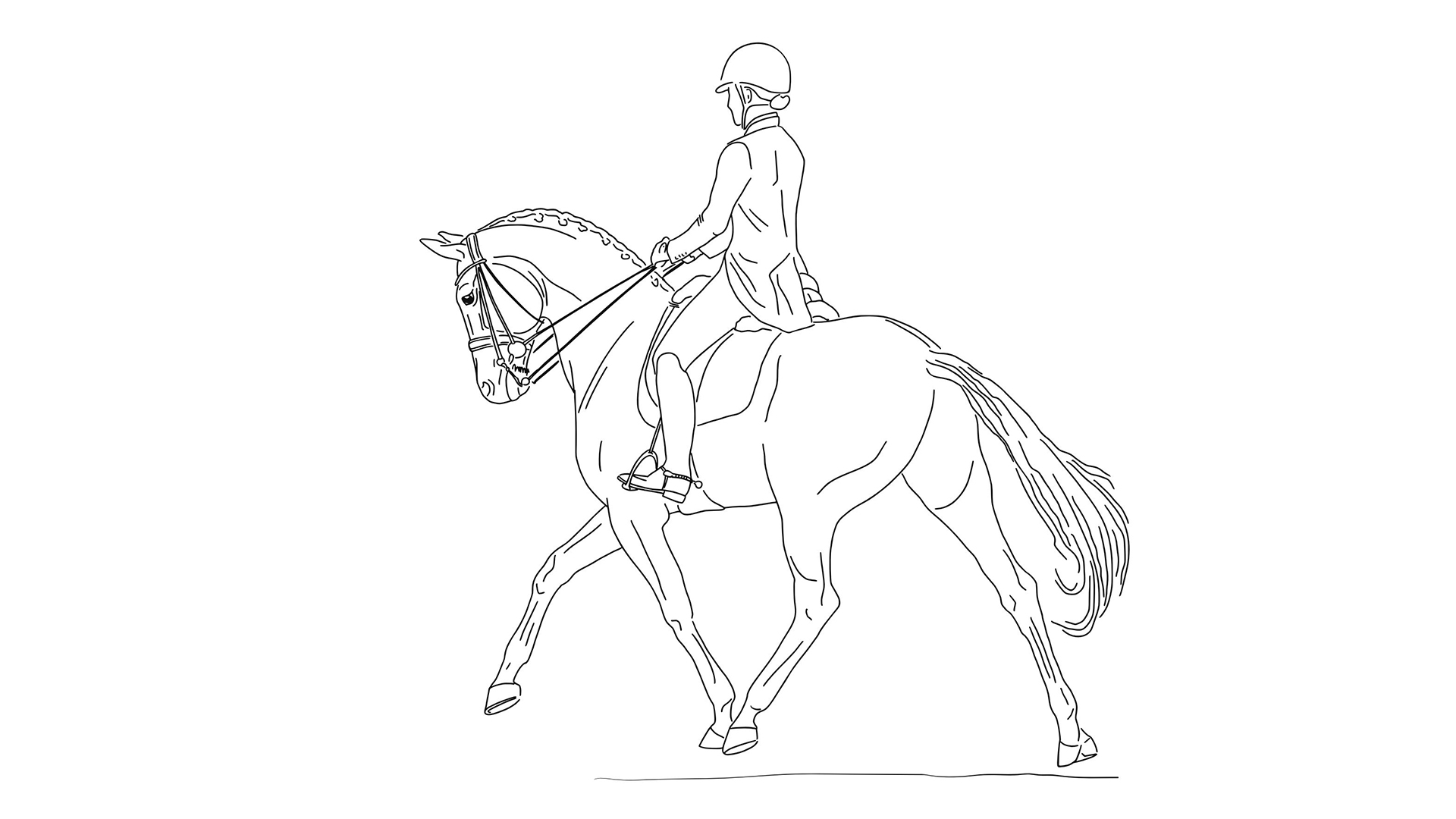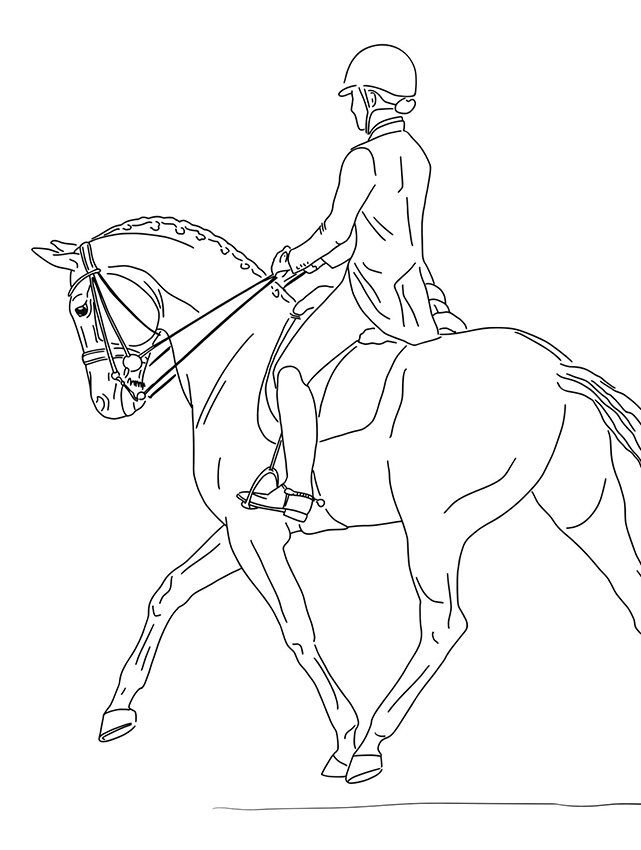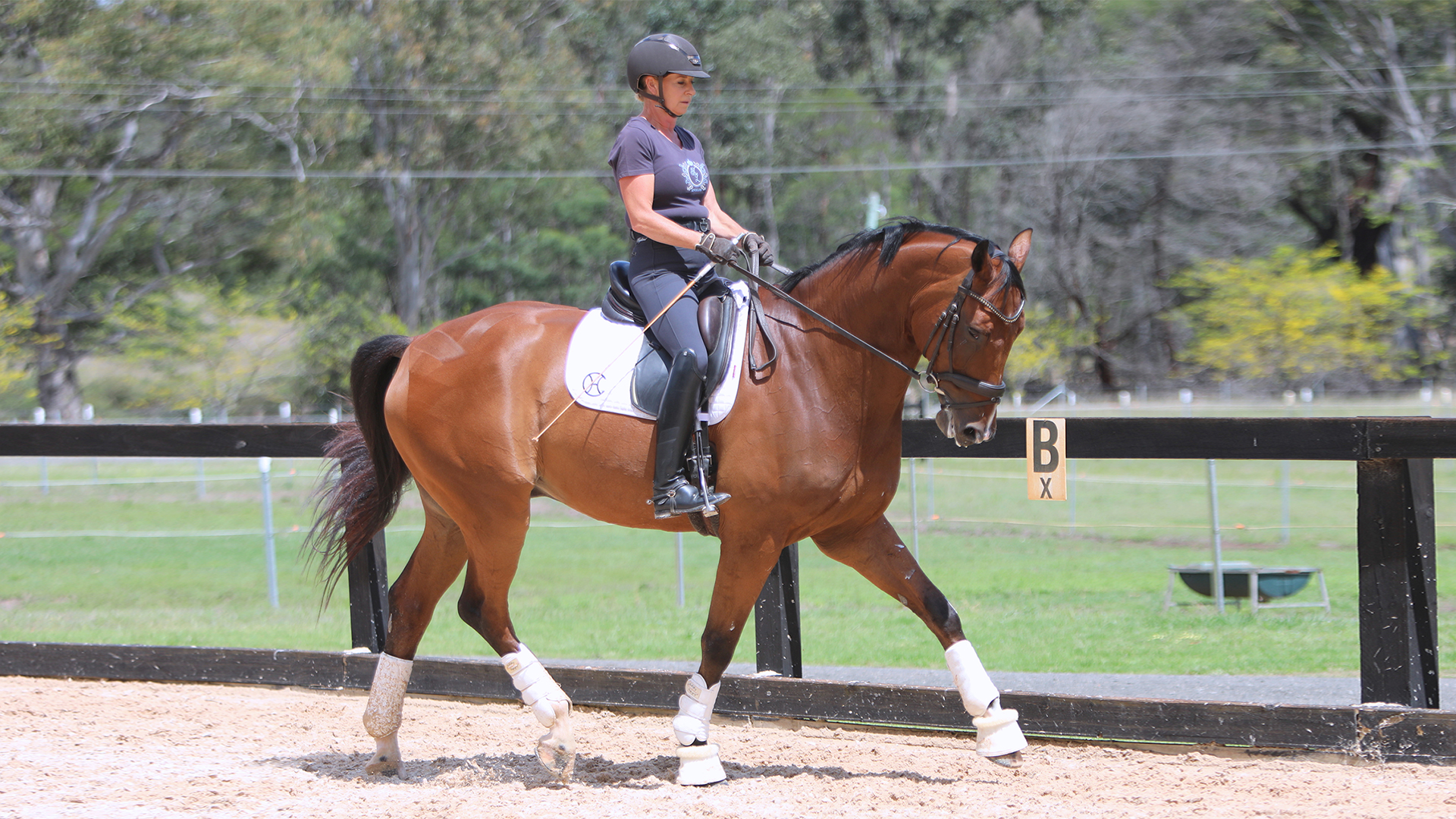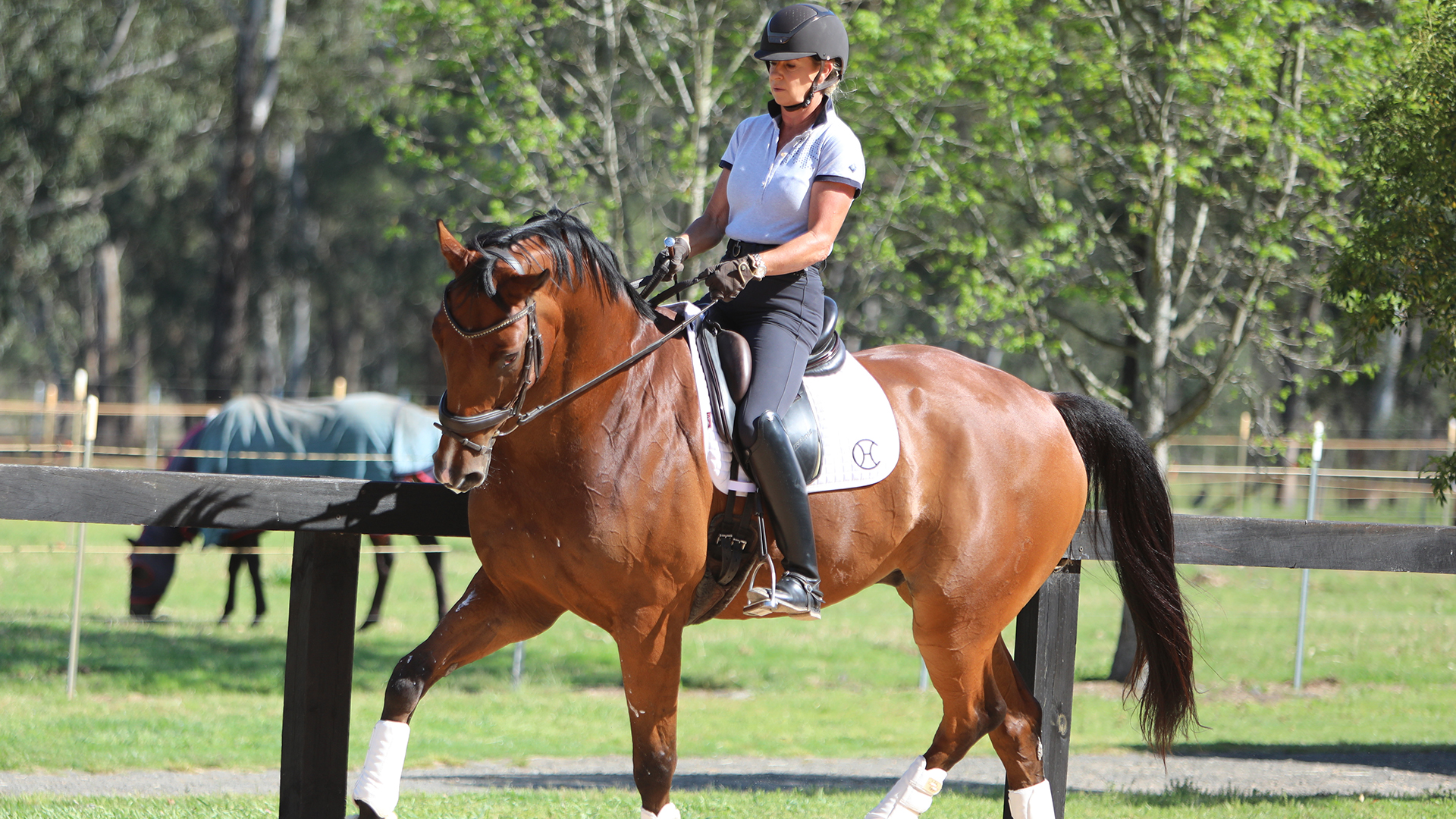With the shoulder-in and travers established, it’s time to move on to the final of the lateral exercises and the culmination of this work for the FEI classes – the half-pass.
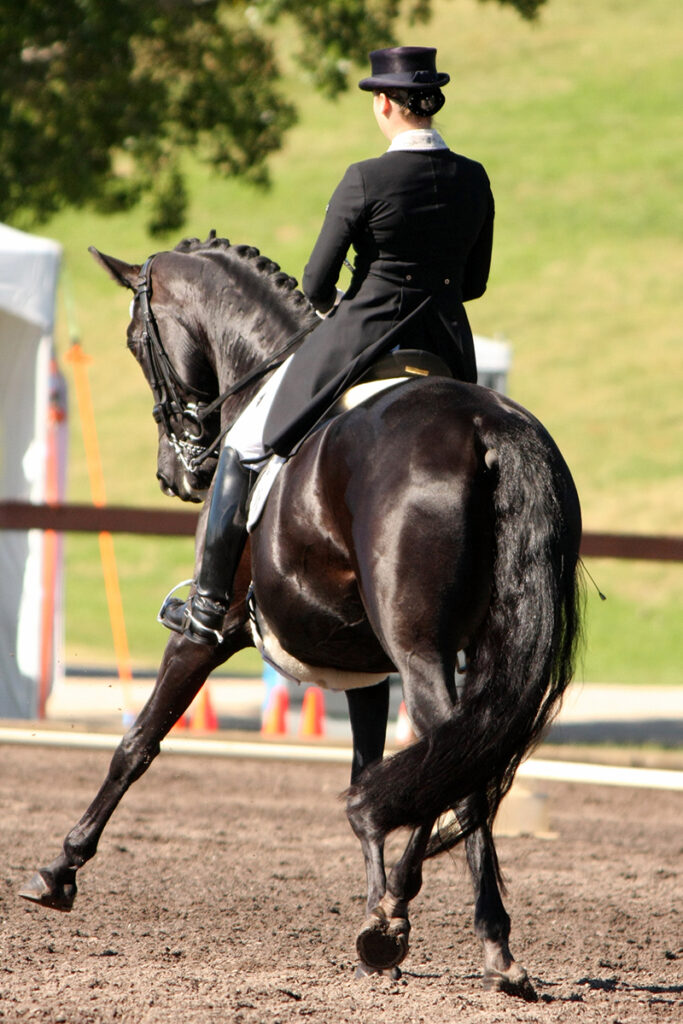
Amazing half pass, with the rider in the best position. Image by Roger Fitzhardinge.
“If the travers is good,
then so will be the half-pass.”
The half-pass is actually the simplest of steps in comparison to the other lateral suppling exercises so far, and will fall into place as easy as 1-2-3 if the travers is good. If the travers is good, then so will be the half-pass.
The FEI definition is as follows: “The half-pass is a lateral movement seen in dressage, in which the horse moves forward and sideways at the same time. Unlike the easier leg-yield, the horse is bent in the direction of travel, slightly around the rider’s inside leg. The outside hind and forelegs should cross over the inside legs, with the horse’s body parallel to the arena wall and his forehand leading. The horse should remain forward, balanced, and bent, moving with cadence. The inside hind leg remains engaged throughout the half-pass, and the horse should not lose its rhythm.
The half-pass is a variation of haunches-in (travers), executed on a diagonal line instead of along the wall. At higher levels it is used to perform a counter-change of hand, combining more than two half-passes with changes of direction in a zig-zag pattern.”
Half-pass can be ridden in walk, trot or canter, but in competition it is only in the tests in collected trot and canter and on various positions on the arena, and at varying degrees of angle with the steepest angle being the most difficult.
When beginning the half-pass for the first time it is no different to riding the travers down the long side. Try it in walk. Walk a line onto a diagonal from K to M remaining straight and then halt. Now visualise that the diagonal has now become a long side, and the rail or the wall is now on your left and you are going to ride simply travers on that imaginary line that goes from K to M. Focus that the outside front shoulder or leg doesn’t go over that imaginary line and that the hindquarters are not too across.
It is a good idea to start simply with the travers, as it’s an exercise that is already familiar and it’s easier to keep the impulsion, balance and forwardness with the lesser angle. It is only travers on the diagonal line. With the half-pass it’s very similar except you have the horse more parallel to the actual long side.
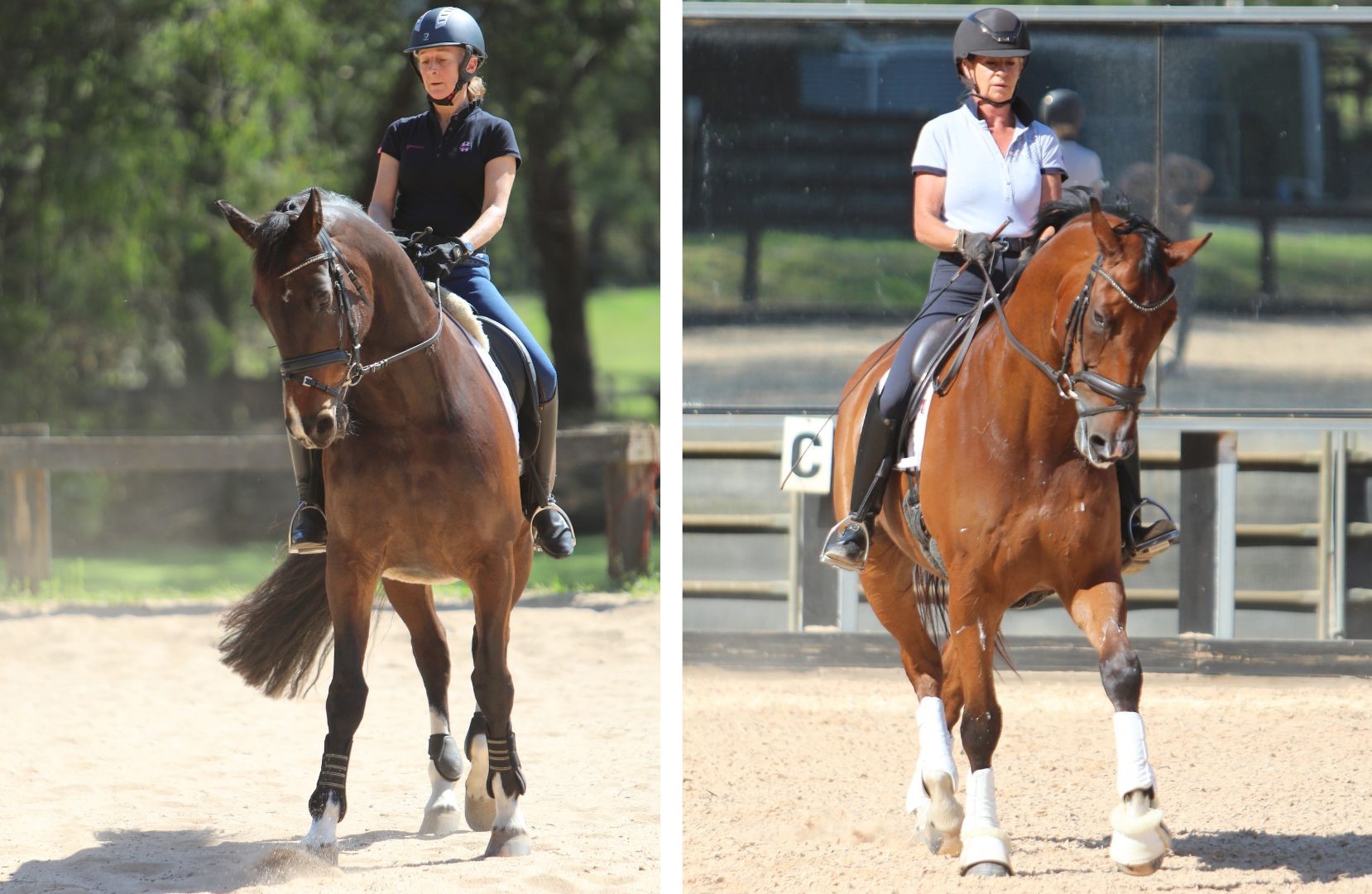
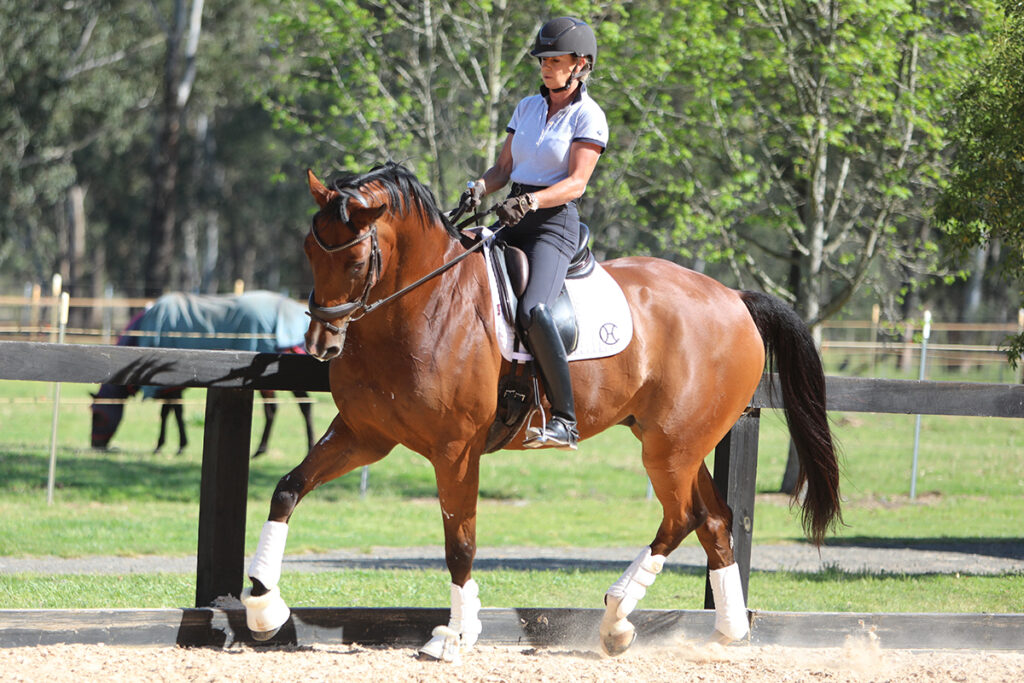
It is good to start the half pass from the shoulder-in. Image by Roger Fitzhardinge.
For the preparation for the half-pass from the long side, it is a good idea to always start from a shoulder-in position first. This gives the bend and flexion required as you go sideways by placing the balance and the weight to that outside and then your outside leg pressure indicates for the sideways. Do this with the inside hand a tiny bit higher than the outside one and a slightly opening outside rein that can assist in controlling the forehand and doesn’t allow the weight to move over to the inside shoulder. The all-important inside leg keeps the horse forwards and upwards and keeps him from taking over. The quality of the half-pass will be determined by the impulsion, and most importantly, the balance that is always up and away from the weight over the inside fore.
Before reading any further…
• Stand up
• Stand with your feet slightly spread
• Lift your right foot off the ground and hold it up
• Move it way out to the right
• Repeat the exercise and take great notice of where the torso is placed to hold the leg up
What does it do when you move the leg even further away? In half-pass the horse moves sideways and forwards towards the direction of the bend and flexion, and to keep a good balance with the degree of suppleness is not easy. Problems such as irregular steps and not remaining collected and steady in the hand creep in… especially the irregular steps and the lack of consistency and cadence. All these problems can often be attributed to the lack of balance; therefore attention to this is of the utmost importance.
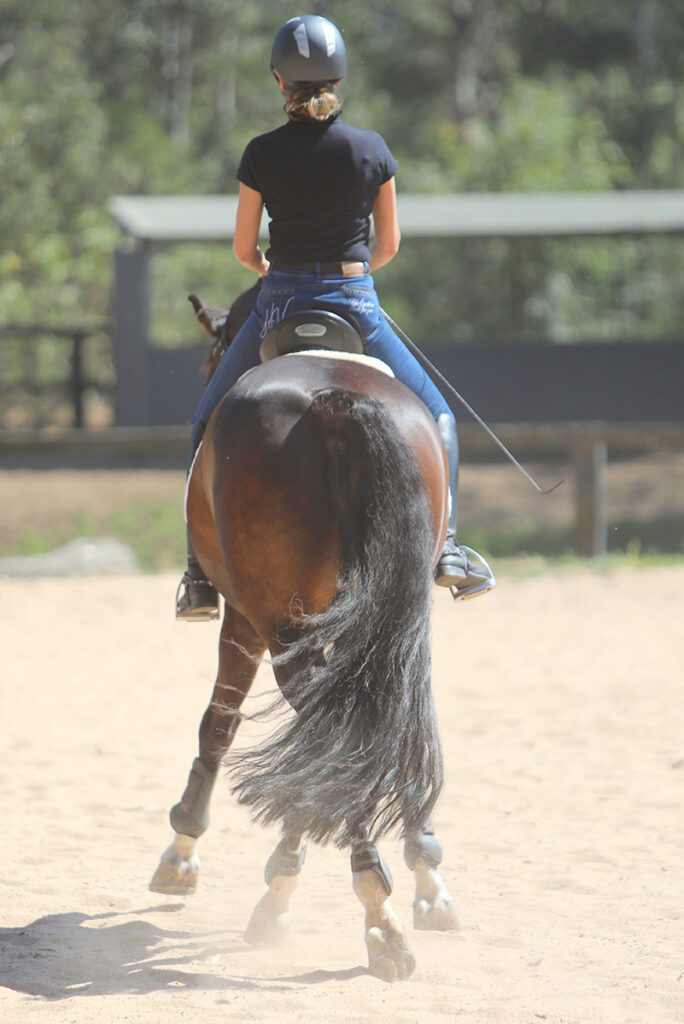
A good training half pass, with the rider not sitting to the inside. Image by Roger Fitzhardinge.
Another fault that is so often seen is that the half-pass starts well and then, as the exercise continues, the quality of the bend and flexion and cadence is lost. Again, a balance problem.
There is a very good primary reason for this and it’s an easy concept. Now keep the feeling of the exercise we did in standing and relate that to the half-pass. It is totally about the balance that enables the fluency of the steps. So if the horse’s weight leans over the inside shoulder and limb (being likened to the leg that we are lifting up off the ground) then he can no longer balance to keep the weight in the right direction (to the outside), so as to free the inside forearm to move sideways with good bend and flexion. The horse must keep the weight to the outside to enable this to happen.
Again, you need to refer back to the exercise you did in standing. If you have the weight over the foot to be lifted then it’s impossible; so it is for the horse. If you now stand up and walk a very steep sideways walk and pay attention to your posture and positioning of your body, it’s so easy to understand the balance.
Further to this, if you had a child on your shoulders and you wanted to walk sideways, then which way would you want that child to lean a little to make it easier? To the outside so you can lift and move that free leg sideways.
This is why the shoulder-in as preparation in balance before the half-pass is essential. Never come around a turn and get the outside leg on too early, as travers in the turn will make the half-pass begin with the quarters leading, and that’s a serious fault.
An excellent exercise is to start in leg-yield. So, off the right rein down the centreline leg-yield to the left but keep the horse parallel. When you have that yielding feeling that the horse is light and around the inside leg, then take the outside leg back and start the half-pass. As soon as you feel a lack of balance and the horse starts to lose the bend, then sharply wake him up and away from the inside leg in leg-yield and then again back to the half-pass. This is a great exercise to keep your horse aware of that inside leg to keep the inside shoulder up and the bend and then the balance to the outside so the fluency sideways can be maintained. EQ
